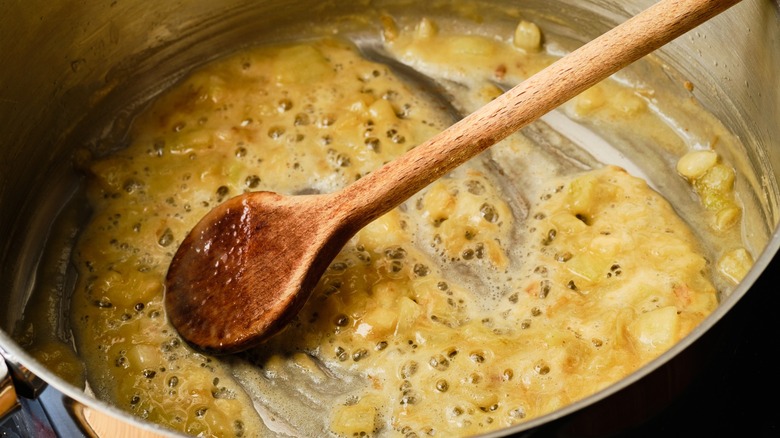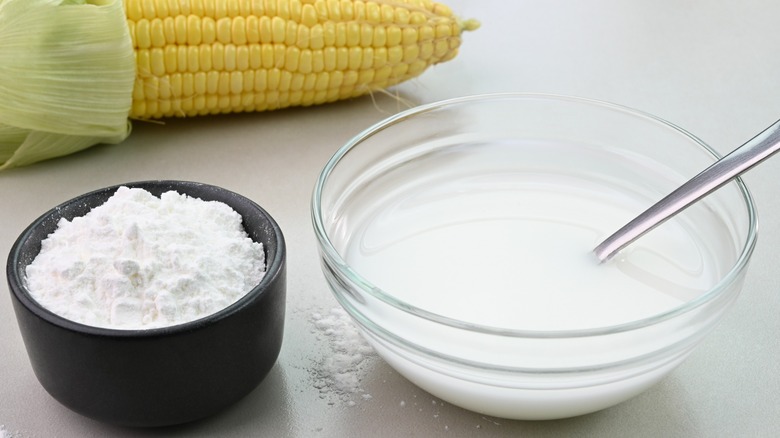The Ingredient Substitution You Can Make For Flour When Making Roux
If you've been a home cook long enough, you've surely experienced this type of scenario: The chicken and veggies have finished roasting. The last order of business before getting dinner on the table is to whip up a quick gravy before those mashed potatoes cool down. You turn to the cupboard and reach for the flour, only to find an empty space where it should be. For a moment you think, "Without flour to make a gravy (that precious nectar which basically makes the meal) I'm roux-ined." But don't fret, if you've got this dinner-saving ingredient on hand all will be saved — cornstarch.
Equal parts fat and flour, a roux (short for beurre roux, which means "brown butter" in French) forms the base for turkey gravy, country gravy, béchamel, and cheese sauce among others, and it's used in everything from macaroni and cheese to gumbo. (One roux to rule them all!)
Because roux can be such an integral component in so many dishes, it's important to have a backup plan (or two) in place for when you're in a pinch. The truth about roux, though, is that it sort of needs flour to work. But don't worry. If you need a thickening agent for your sauce or gravy, as long as you have a starch of some kind, you can get there.
At the root of roux
If you don't have flour, cornstarch is one of your best options. Neutral in flavor and easy to use, with about the same thickening power and consistency results as flour, no one will ever know if you sub in cornstarch. The biggest difference here is that while you can sprinkle flour directly into the pan with your fat and begin whisking, before adding your liquids, with cornstarch you'll need to first make a slurry. You do this by adding starch to cool or room-temperature liquid first, in a 1:2 ratio. Using a fork to quickly whisk your slurry, make sure the starch has completely dissolved — no lumps. Then, add it to the fat and liquids in your already warming saucepan or skillet (starch activation needs heat to gelatinize and works best when stirred in from cooler to hot liquids).
Need a browned roux? Since you can't brown a slurry, you'll need to use butter as your fat of choice, which can be browned for greater depth of flavor. Or sub in chickpea flour, which can be used just like traditional flour (directly in the pan and browned — no slurry necessary) but which tastes best in poultry-flavored gravies and sauces.
If you're out of both flour AND cornstarch — don't sweat it. You can use any of the following slurry-style replacements: potato starch, arrowroot powder, or tapioca starch to complete the thickening task. So, while you might be "out of stock," you won't roux the day.

